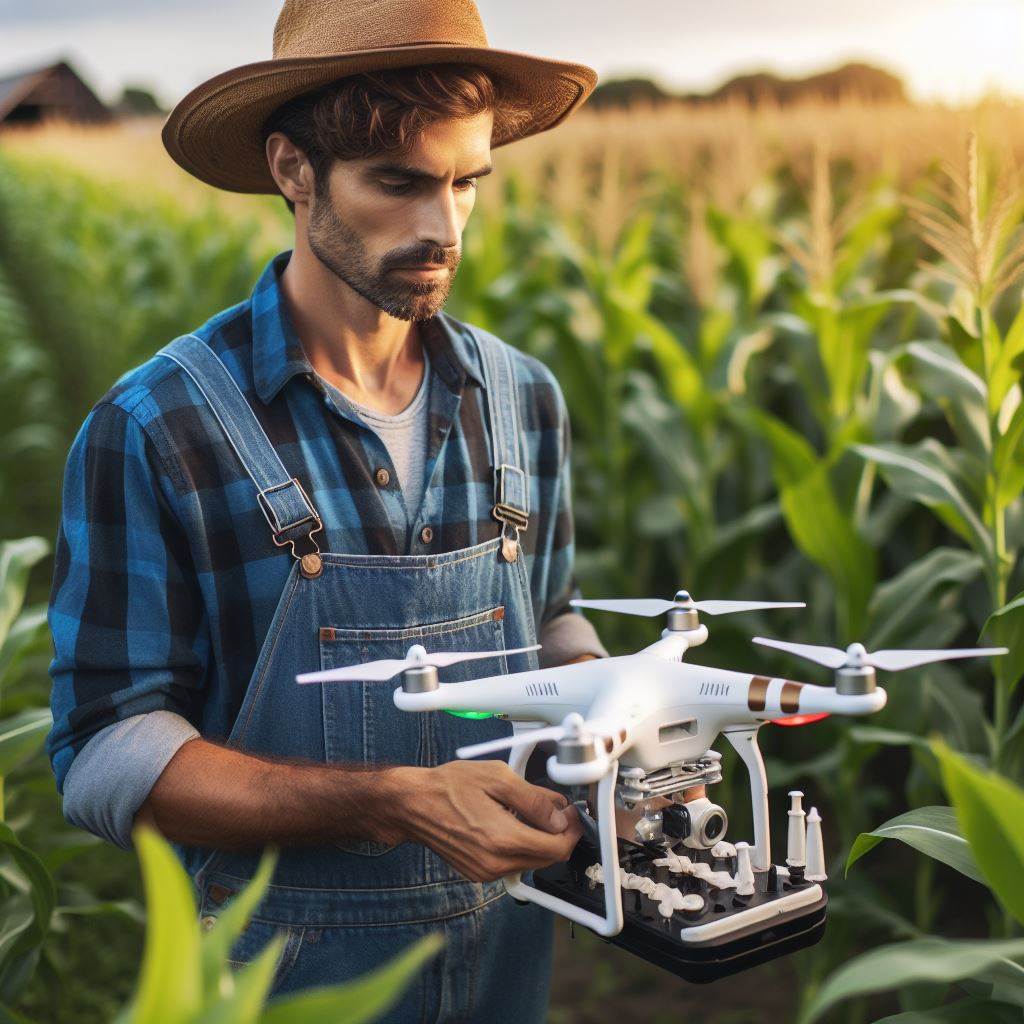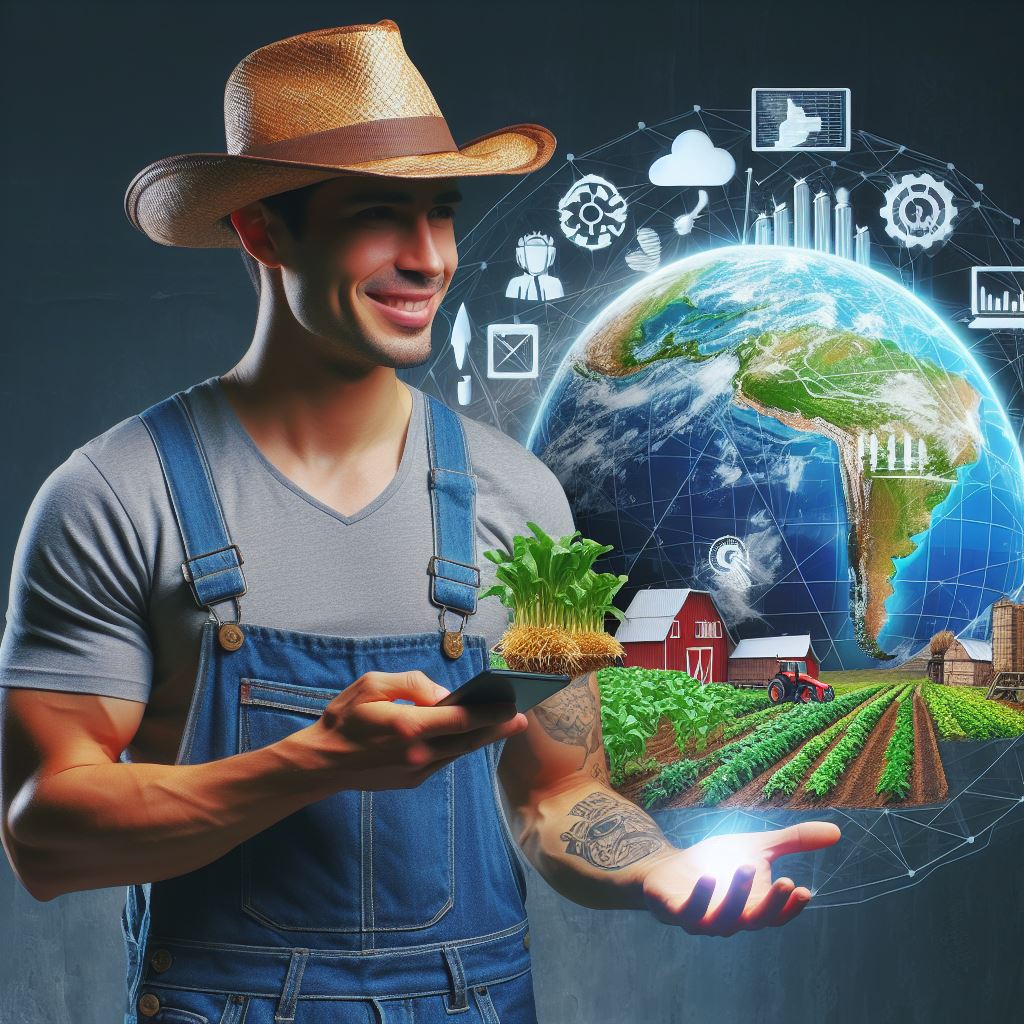Introduction
Definition of climate change
Climate change is a phenomenon that involves long-term alterations in temperature patterns, precipitation levels, and other aspects of the Earth’s climate system.
These changes occur due to natural processes and human activities.
In recent decades, climate change has gained significant attention due to its detrimental effects on various aspects of human civilization, including agriculture.
Significance of climate change in relation to agriculture
Rising temperatures, altered rainfall patterns, and increased frequency of extreme weather events profoundly impact agricultural activities globally.
These changes affect crop production, livestock health, and overall food security.
As a result, climate change has emerged as a critical issue in relation to agriculture.
Purpose of the blog postchapter
The purpose of this blog post is to delve into the impact of climate change on global agricultural trade.
It aims to analyze how changing climatic conditions shape the dynamics of international trade in agricultural products.
By exploring this topic, we can gain a greater understanding of the challenges and opportunities that arise as the world adapts to a changing climate.
In the upcoming sections of this post, we will discuss the specific ways in which climate change affects the agricultural sector, explore the implications for global trade, and highlight potential strategies to mitigate the negative effects.
Climate change is a complex issue, but understanding its relationship with agriculture and trade is crucial for developing sustainable solutions.
Stay tuned for the following sections to gain valuable insights into this pressing issue.
Effects of Climate Change on Global Agriculture
Impact of rising temperatures on crop yields
- Rising temperatures can reduce crop yields due to increased evaporation and heat stress.
- Heatwaves can lead to reduced pollination, affecting the reproduction and fruit yield of crops.
- Warmer temperatures can also affect crop quality, leading to lower nutritional value or increased susceptibility to pests.
Changes in precipitation patterns and water availability
- Changing rainfall patterns can disrupt planting and harvesting schedules, affecting crop yields.
- Increased frequency of droughts can lead to water scarcity, limiting agricultural production.
- Excessive rainfall can cause soil erosion and nutrient loss, reducing soil fertility and crop productivity.
Increase in extreme weather events and their consequences
- More frequent and intense storms can damage infrastructure, crops, and livestock, leading to economic losses.
- Flooding can contaminate fields with pollutants and sediments, rendering them unsuitable for cultivation.
- Extreme heatwaves can cause heat stress and mortality in livestock, compromising meat and dairy production.
Shifts in pest and disease patterns
- Warmer temperatures can aid the spread of pests and diseases, damaging crops and reducing yields.
- Pests like insects and weeds can become resistant to traditional control methods, requiring more pesticide use.
- Changes in temperature and rainfall can create favorable conditions for new pests to emerge in different regions.
Climate change poses significant threats to global agriculture, with various impacts on crop yields, water availability, extreme weather events, and pest patterns.
Rising temperatures can directly reduce crop productivity through increased evaporation and heat stress.
Heatwaves can also disrupt pollination and affect crop quality.
Transform Your Agribusiness
Unlock your farm's potential with expert advice tailored to your needs. Get actionable steps that drive real results.
Get StartedChanges in precipitation patterns, such as irregular rainfall and increased droughts, can lead to water scarcity and soil degradation, negatively impacting agricultural production.
Furthermore, extreme weather events like storms and flooding can cause physical damage to crops and infrastructure, while heatwaves can harm livestock.
Additionally, climate change can favor the spread of pests and diseases, with potential consequences for crop yields and food security.
In order to mitigate these effects, it is crucial to implement sustainable agricultural practices, develop climate-resilient crop varieties, improve irrigation systems, and promote integrated pest management.
International cooperation and policies aimed at reducing greenhouse gas emissions are also essential for addressing the challenges of climate change in the agricultural sector.
Read: Global Organic Markets: Farming’s Future?
Climate Change and Global Agri Trade
Disruption of traditional agricultural practices
- Extreme weather events affect planting and harvesting seasons.
- Increased frequency of droughts and floods lead to crop failures.
- Warmer temperatures may reduce productivity of certain crops.
Changes in crop production and trade patterns
- Shifts in climate zones may render some areas unsuitable for traditional crops.
- New areas with suitable climates emerge as potential agricultural regions.
- Changes in crop yields affect global supply and demand dynamics.
Influence of climate change on commodity prices
- Unpredictable weather patterns introduce price volatility in agricultural commodities.
- Increased demand for climate-resilient crops may drive prices up.
- Lower crop yields due to climate change could lead to higher commodity prices.
Market opportunities and challenges for farmers and traders
- Investment in climate-smart agricultural practices can provide new market opportunities.
- Organic and sustainable farming methods gain importance in a changing climate.
- Adapting to climate change requires significant investment in technology and infrastructure.
- Access to credit and insurance becomes crucial for farmers to mitigate risks.
- Global trade regulations need to account for climate change impacts on agriculture.
Read: EU Trade Policies and US Farm Exports
Mitigating and Adapting to Climate Change in Agri Trade
Achieving sustainable agricultural practices is crucial in mitigating the impacts of climate change on global agri trade.
By implementing strategies that promote sustainability and resilience, farmers can adapt to the changing climate and continue to thrive in the agricultural industry.
Sustainable farming practices
- Implementing organic farming methods reduces reliance on synthetic inputs and minimizes environmental impact.
- Practicing crop rotation helps maintain soil health, improve nutrient cycling, and reduce pest and disease outbreaks.
- Using cover crops helps prevent soil erosion, improves soil fertility, and enhances water infiltration.
- Integrating livestock farming with crop production allows for efficient nutrient recycling and reduces greenhouse gas emissions.
- Applying precision agriculture techniques enables farmers to optimize resource use and minimize waste.
Adoption of climate-resilient crop varieties
- Developing and cultivating crop varieties that are tolerant to drought, heat, and other climate-related stresses is essential.
- Utilizing biotechnology and genetic engineering can accelerate the breeding of climate-smart crop varieties.
- Promoting seed banks and decentralized breeding programs helps preserve and enhance biodiversity.
- Encouraging farmers to diversify their crops reduces the dependence on a single crop and enhances resilience to climate change.
Efficient irrigation and water management
- Adopting precision irrigation systems, such as drip irrigation, reduces water wastage and improves water-use efficiency.
- Using water-efficient technologies, such as moisture sensors and weather-based irrigation scheduling, optimizes water application.
- Implementing water-saving techniques like mulching and conservation tillage helps retain soil moisture and reduce evaporation.
- Investing in water infrastructure, such as reservoirs and water catchment systems, enhances water availability during dry periods.
Technological innovations for climate-smart agriculture
- Embracing digital farming technologies, such as satellite imagery and drones, enables better monitoring and management of crops.
- Utilizing predictive models and data analytics helps farmers make informed decisions regarding planting, harvesting, and pest control.
- Implementing smart irrigation systems that adjust water application based on real-time weather data optimizes water use.
- Adopting biodegradable and eco-friendly packaging reduces the carbon footprint during transportation and distribution.
Combining these mitigation and adaptation strategies with effective policies and support from governments and international organizations can result in a resilient and sustainable agricultural sector in the face of climate change.
This, in turn, will contribute to shaping the future of global agri trade and ensure food security for all.
Read: Latin America: A Farm Export Powerhouse?

Policy and Institutional Actions
International agreements and frameworks
- Signing and implementing international agreements to address climate change is crucial.
- Agreements such as the Paris Agreement aim to limit global warming and mitigate climate change.
- These agreements provide a framework for countries to work together in reducing greenhouse gas emissions.
- Countries must actively participate and fulfill their commitments under these agreements.
- Cooperation and coordination among nations are essential to achieve effective climate change solutions.
Government support for climate change mitigation and adaptation
- Governments play a vital role in supporting efforts to mitigate and adapt to climate change.
- They should provide financial incentives and assistance to promote sustainable agricultural practices.
- Investments in renewable energy and low-carbon technologies can help reduce greenhouse gas emissions.
- Policies should be implemented to ensure resilience and climate-proofing of agricultural systems.
- Government funding should prioritize research and development of climate-resilient crops and farming techniques.
Role of agricultural research and development organizations
- Agricultural research and development organizations are instrumental in finding climate change solutions.
- They should focus on developing crops that can withstand changing climatic conditions.
- Research should be aimed at improving agricultural practices to reduce emissions and increase productivity.
- These organizations can also provide technical support and knowledge transfer to farmers.
- Efforts should be made to facilitate collaboration between research organizations and farmers for effective adoption of innovations.
Collaboration between public and private sectors
- Collaboration between public and private sectors is crucial for addressing climate change in agriculture.
- Both sectors can contribute resources, expertise, and technology to advance climate-friendly practices.
- Public-private partnerships can help finance adaptation and mitigation projects in agriculture.
- Joint initiatives can ensure the development and dissemination of climate-resilient technologies.
- Collaboration can enhance knowledge exchange and promote sustainable agricultural practices on a larger scale.
Therefore, policy and institutional actions are essential in shaping global agricultural trade amidst climate change.
International agreements and frameworks provide a foundation for cooperation, while government support is crucial in promoting climate change mitigation and adaptation.
Agricultural research and development organizations play a crucial role in finding solutions, and collaboration between the public and private sectors can drive sustainable practices.
By working together, we can ensure the resilience of agricultural systems in the face of climate change.
Read: Agri Trade Wars: Impact on US Farmers
Gain More Insights: Exploring Farm Export Opportunities
Case Studies: Climate Change and Agri Trade
Impact of climate change on coffee production and trade
- Climate change is adversely affecting coffee production by altering suitable growing conditions.
- Rising temperatures and irregular rainfall patterns pose major challenges to coffee cultivation.
- Droughts and increased pest and disease incidences lead to decreased coffee yields.
- Coffee farmers and traders face supply chain disruptions and financial losses due to unpredictable weather.
- Shifts in coffee production areas and decreasing crop quality affect global coffee trade.
- The demand for climate-resilient coffee varieties and sustainable production practices has increased.
- Certification programs encourage responsible farming practices to mitigate climate change impacts.
- Collaborative efforts between governments, coffee corporations, and farmers aim to address climate challenges.
- Adaptation strategies such as shade-tree planting and water conservation initiatives are being implemented.
- Innovation and research are vital to developing climate-smart coffee production techniques for a sustainable future.
Effect of changing climatic conditions on wine production
1. Climate change affects wine production as it alters grapevine growth and ripening processes.
2. Rising temperatures impact the balance between sugar accumulation and acid retention in grapes.
3. Changes in rainfall patterns can lead to drought or excessive watering, affecting wine quality.
4. Wine regions may need to adapt to different varieties and relocate to suitable climatic zones.
5. Variability in harvest dates affects wine markets and trading patterns globally.
6. Sustainable vineyard management practices promote climate resilience, soil conservation, and water management.
7. Winemakers invest in research and technology to mitigate climate change impacts and maintain wine quality.
8. Collaboration between industry stakeholders and scientific experts help develop climate-adapted grape varieties.
9. Climate change also brings opportunities for new wine-growing regions and grape cultivation in previously unsuitable areas.
10. Consumer awareness and demand for sustainably produced wines can drive positive changes in the industry.
Challenges and opportunities in seafood industry due to climate change
- Climate change affects the availability, distribution, and quality of seafood resources worldwide.
- Warming oceans lead to changes in fish migration patterns, impacting fishing communities and trade.
- Ocean acidification affects shellfish growth, threatening aquaculture operations and seafood supply
. - Extreme weather events disrupt fishing activities, causing economic losses and food insecurity.
- Rising sea levels and coastal erosion affect coastal communities engaged in fishing and aquaculture.
- Regulations and policies need to address climate change and protect vulnerable marine ecosystems.
- Sustainable fishing practices, including catch limits and gear modification, help mitigate climate impacts.
- Aquaculture adapts to changing conditions, using innovative techniques and diversifying species.
- Market demand for sustainably sourced seafood creates opportunities for climate-resilient seafood products.
- International collaboration and research focus on addressing climate change challenges in the seafood industry.
Conclusion
Recap of the main points discussed
Throughout this blog section, we have explored the impact of climate change on global agricultural trade.
We started by discussing the various ways in which climate change is shaping this industry, from altering crop yields to affecting supply chains.
Furthermore, we highlighted the importance of addressing climate change in the context of global agri trade.
The vulnerability of agricultural systems to climatic conditions necessitates proactive measures to ensure food security, sustainability, and economic stability.
Importance of addressing climate change in global agri trade
Failure to address climate change could result in devastating consequences for global agricultural trade.
Showcase Your Farming Business
Publish your professional farming services profile on our blog for a one-time fee of $200 and reach a dedicated audience of farmers and agribusiness owners.
Publish Your Profile;Disruptions in production, market volatility, and increased food prices are just a few of the potential outcomes.
Moreover, the agricultural sector is highly interconnected, meaning that any disruption in one region can have a cascading effect on others.
As climate change intensifies, it becomes imperative for stakeholders in the industry to prioritize adaptation and mitigation strategies.
Call to action for individuals and stakeholders in the agricultural industry
The responsibility to address climate change extends beyond governments and international organizations.
Individuals, farmers, businesses, and policymakers all play a crucial role in shaping the future of agri trade.
We must advocate for sustainable farming practices, invest in research and development of climate-resilient crops, and support policies that incentivize carbon-neutral approaches.
Collaboration and knowledge-sharing among stakeholders are key for successful adaptation and mitigation efforts.
Climate change presents both challenges and opportunities for global agri trade.
By acknowledging the urgency of the issue and taking collective action, we can forge a more sustainable and resilient future for this vital industry.




